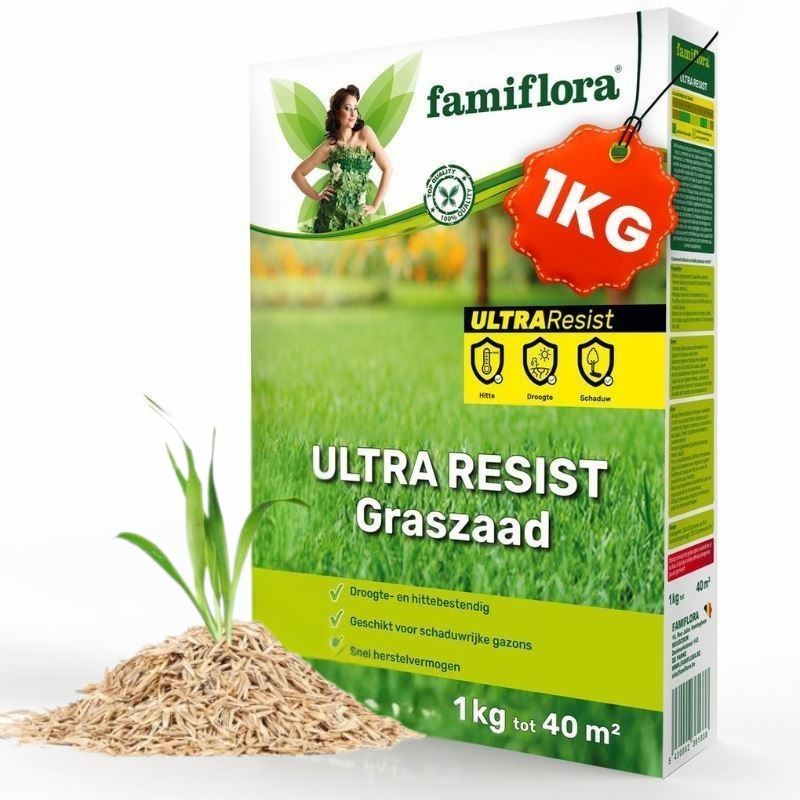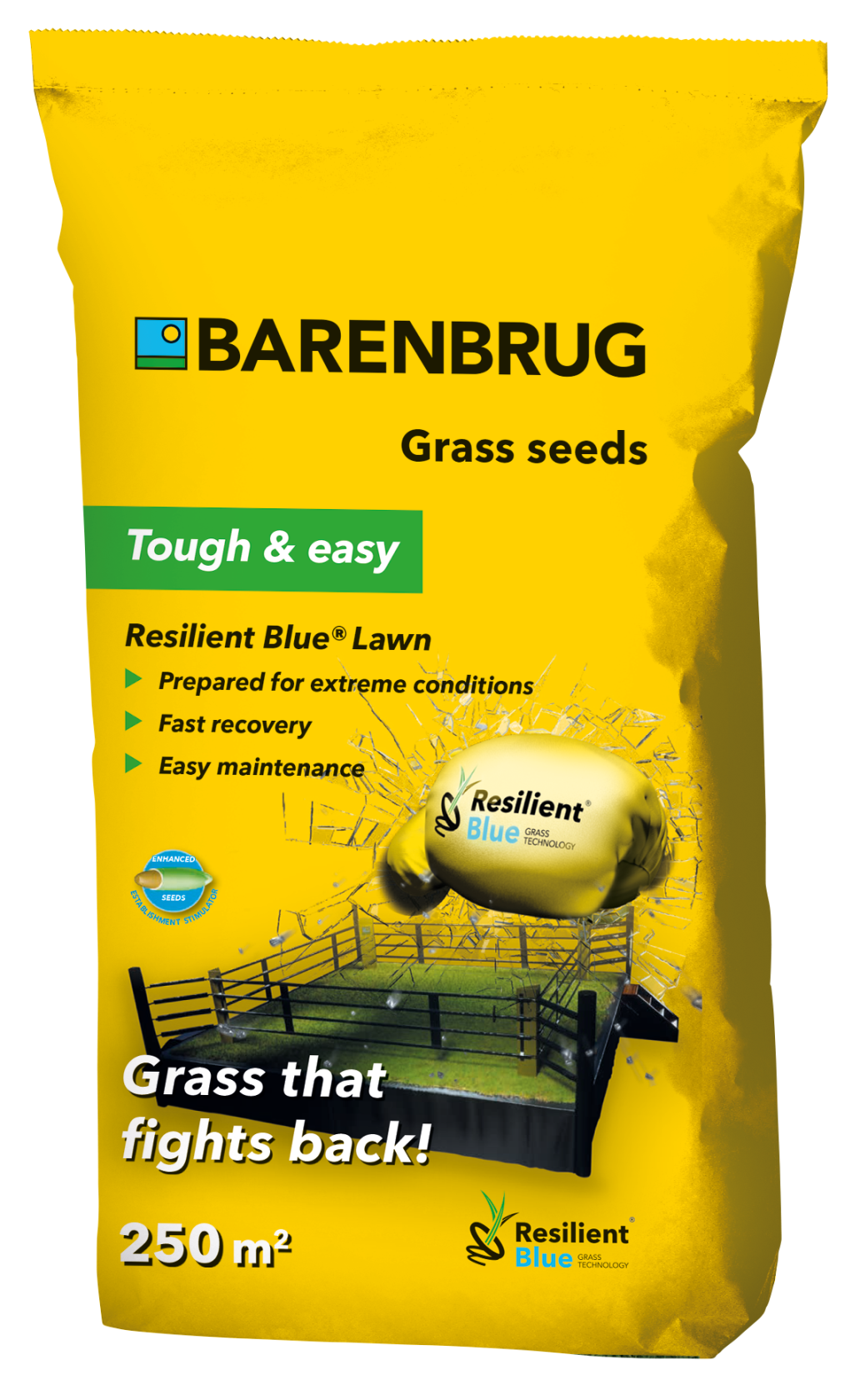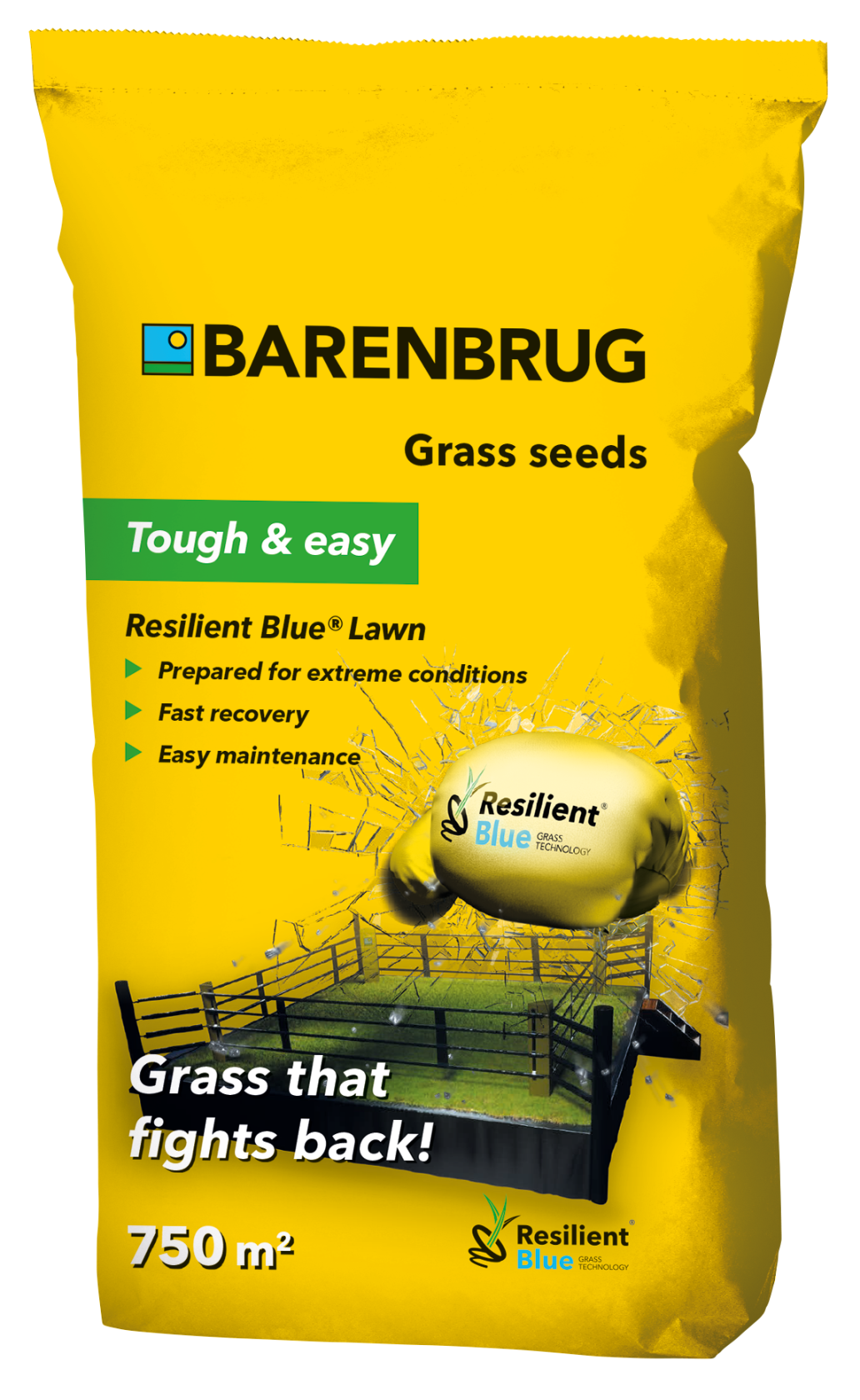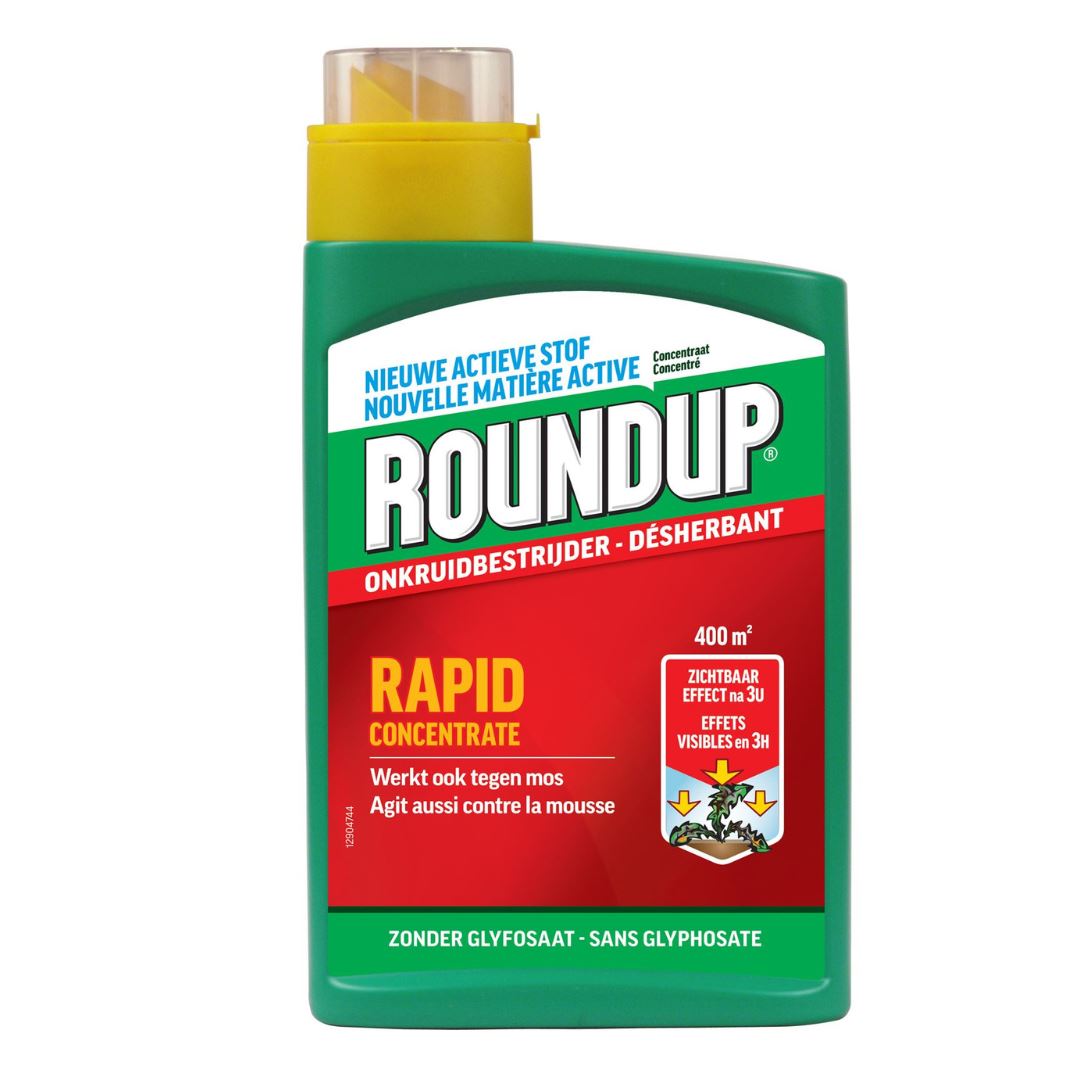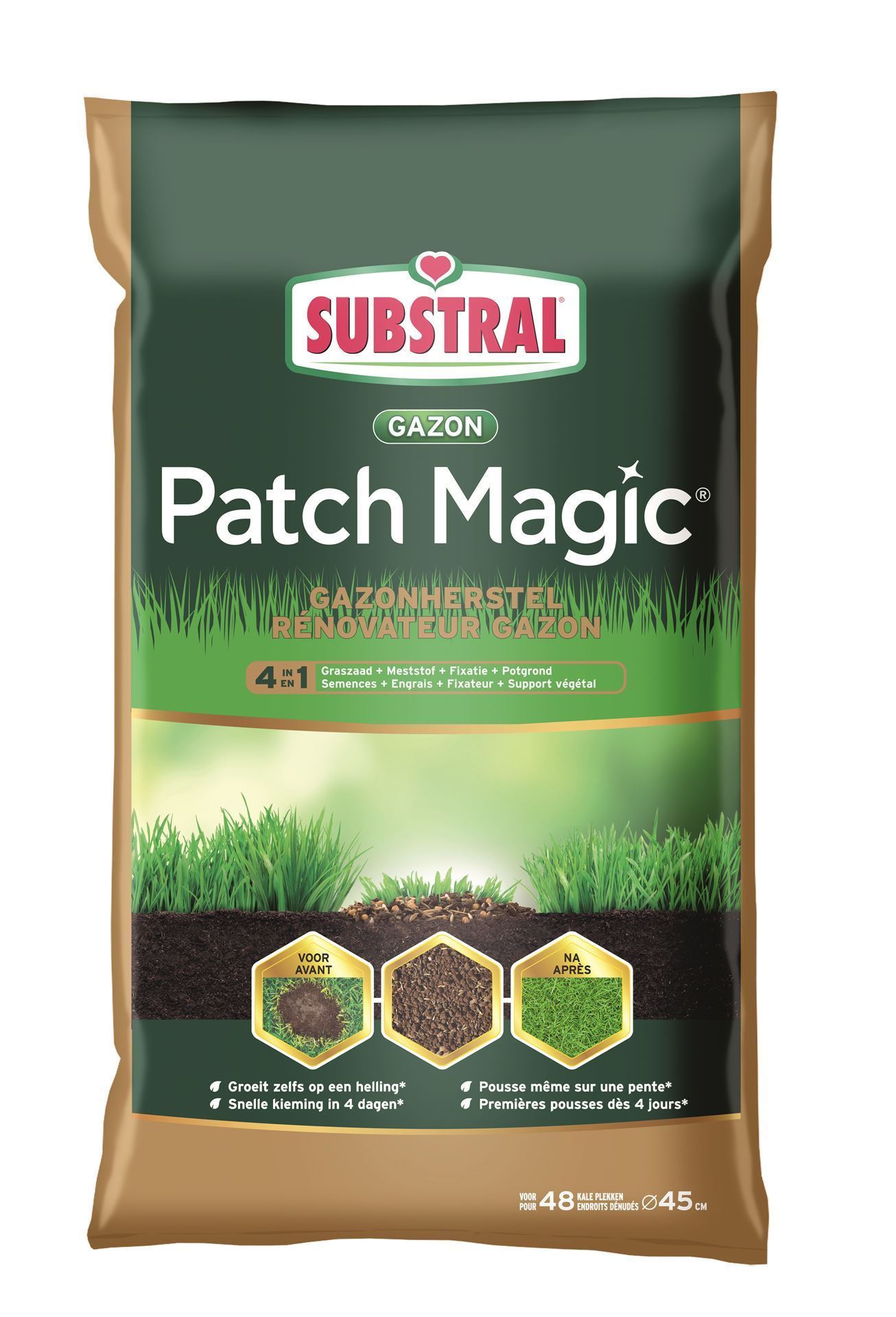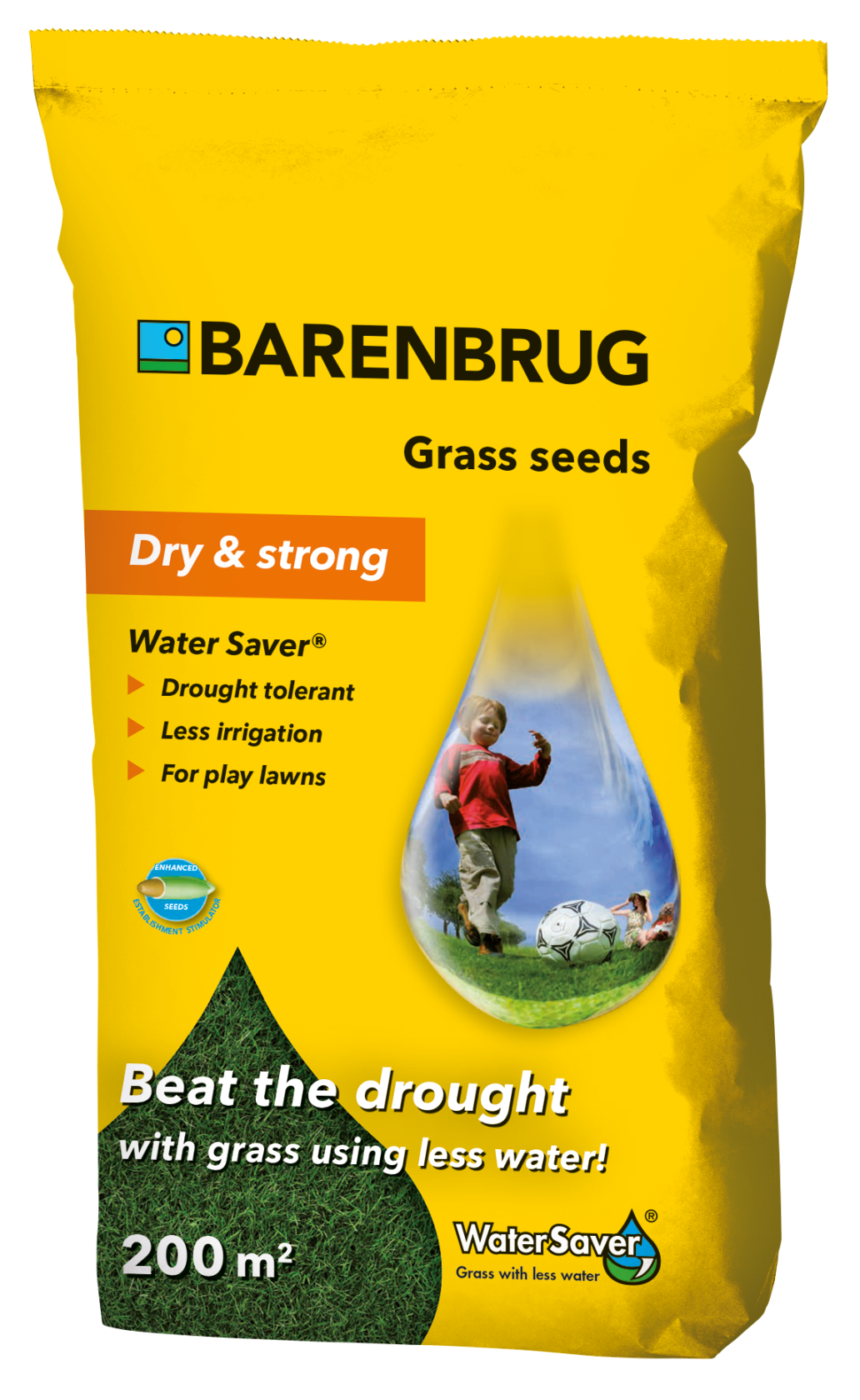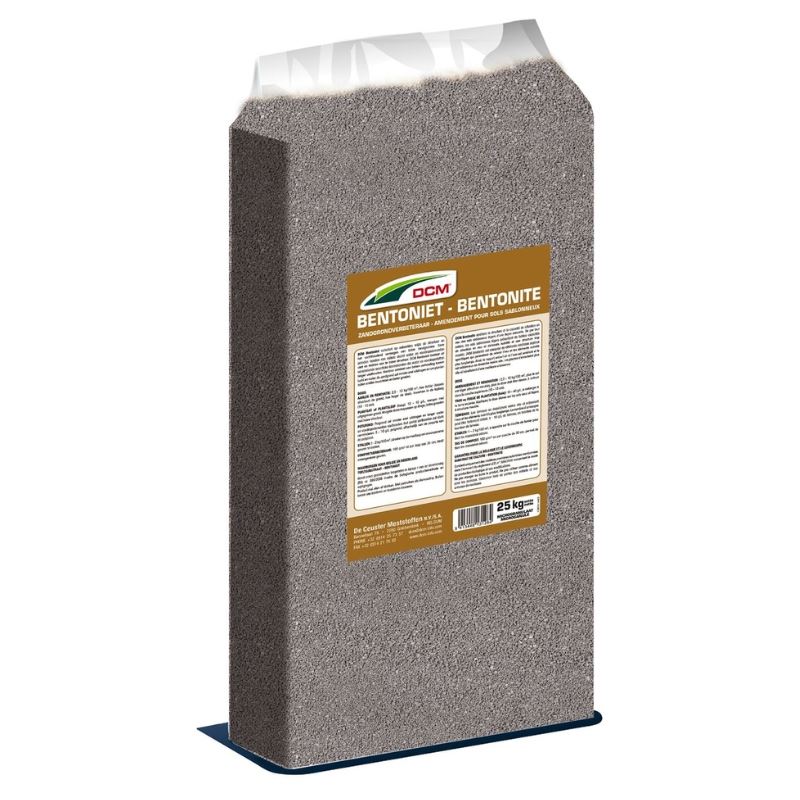
Restore your lawn after a long drought in 5 steps
After weeks of drought, your lawn may look yellow and dry. How bad your lawn is depends very much on the type of grass that grows in your garden. Rye grass is often used in the cheaper grass seed mixtures. However, it needs a lot of water and will die off much quicker in extremely dry weather. Cheapness is not always sustainable.... Reed fescue and field bean grass will stay green longer in dry weather. Even if you used a soil improver when planting your lawn, this will now work to your advantage. The soil will hold the moisture it already has in it better and your grass will suffer less damage from drought.
With our simple five-step plan, you can make your lawn green and strong again!
Step 1: Is your lawn still alive?
It is important to check whether there is still life in your lawn, or whether the sun has completely destroyed your beautiful lawn. You can check this with a simple test:
👉 Take a piece of grass of 10 x 10 cm out of the ground
👉 Submerge it in a bucket full of water and let the piece of lawn soak up all the water
👉 Pour the water out of the bucket but leave the lawn area in place
👉 Remove the sample of grass from the bucket after two days and see if any white roots appear at the bottom of the grass
→ Does the lawn still show a sign of life (white roots are visible)? Good news, your lawn is still viable. Go directly to step 2 to start your rescue operation!
→ Is it not? Unfortunately, your lawn is too badly damaged and needs to be completely renewed. Also go to step 2.
Step 2: Does your lawn take up water?
As a result of prolonged drought and high levels of evaporation, your lawn may suffer from stress, no matter how crazy it sounds. This causes the soil to repel water instead of absorbing it. And that moisture is essential for a good recovery of the grass. To check whether your soil is water repellent, you can do a simple test:
👉 Loosen a patch of grass
👉 Place a few drops of water at a depth of 2 cm
→ Is the drop of water absorbed well and quickly by the grass? Then there is still good watering, and your lawn will recover more quickly. Go on to step 3!
→ Does it take more than one minute for the drop to be absorbed by the grass? Then your soil is water-repellent. A longer period of rain is needed before you can start sowing.
A regular grass seed mixture will not come up in this case. Or you should be more patient, or use grass seed with a special coating (for example, the Yellow Jacket Water Saver Manager). This revolutionary coating on the grass seed ensures that the seed can germinate under the right conditions, and you get young grass plants. This does not slow down their growth process, and you get a healthy and strong lawn again.
Step 3: Remove weeds, street grass and thatch
Due to the prolonged drought, the grasses are damaged and usually form a felt-like layer. It is important to aerate your lawn in order to ensure proper recovery. The best way to do this is by scarifying your grass. Many people do this in the spring to remove the moss, but scarifying is also ideal for removing the dead grasses. Do you also give your lawn an airy haircut? Find out more here!
Because the lawn is weakened, weeds and street grasses have free rein. The saying 'weeds don't wither away' applies here more than ever! As soon as they feel a little water squirming around in their roots, they start to grow and displace the slower-recovering grass. So make sure your lawn is completely free of weeds and perennial grass before you start planting grass seeds. But how do you go about this? You can pull out weeds manually or call in a garden contractor with a phytosanitary licence to combat them chemically and selectively. Since 2019, these selective weed killers are no longer for sale to private individuals. You cannot selectively remove street grass with a product. Unfortunately, there are no products for this. The solution is to remove everything manually (with a spade) or to use an 'all dead' product. The latter, however, will also kill your lawn. Roundup (glyphosate) used to be used for this purpose but there are also alternatives based on acids (e.g. Herbi press). The result is already visible after a few hours, and the product is quickly broken down in the soil. However, these products will burn everything (including your lawn) and the treatment must be repeated regularly. It is therefore not a ready-made solution.
Step 4: Sowing the grass
- Your lawn is viable & the soil is not water repellent
This will be the case for most people. This is logical, because grass is very strong and can take a beating. Are there bald spots in your lawn? Then you can sow them with a standard recovery lawn seed. Are there any large spots? Then we recommend that you do not choose a repair mixture but a full play and sports or ornamental lawn mixture. Make sure that the soil is sufficiently wet when sowing, and sprinkle the area with some topsoil or compost afterwards.
- Your lawn is viable but the soil is water repellent
You can do the same as above, but you must not sow until there has been sufficient precipitation and the soil has absorbed water again. This can take some time, so you will have to be patient. Don't do this, and start immediately? Then you risk a very poor emergence of the grass seed because it cannot germinate in the right conditions.
An alternative is to sow a grass seed with a special coating (Yellow Jacket Coating) for better establishment. This actually creates a zone around the seed with ideal moisture conditions to ensure a fast-developing grass plant, even in difficult terrain.
- Your lawn is not viable
Unfortunately, Tabula rasa. You will have to lay out a new lawn. A big job, but unfortunately necessary if you want a nice lawn in your garden.
Before new grass can be sown, the soil has to be well fluffed up. Fertilise the soil also 1 week before sowing. This allows the fertiliser to take effect. Do not use a chemical fertiliser but an organic variant (such as Recovery fertiliser).
Also work with a soil improver to create a nutrient-rich and airy soil. Often you can get compost in bulk for free or at a very good price at the local container park. After applying the compost or soil improver and fertiliser, you can work it in. Please note: Compost that is not easy to digest can burn your lawn. If you add a lot of extra soil improver, compost or fertiliser to the soil, this can cause subsidence later on. So do not overdo it.
Do you regularly suffer from specific problems such as too much or too little water on your lawn? Then now is the time to make some specific additions to the compost and work it in together:
- Bentonite: Ideal for sandy soils. These are small grains of clay that make the soil heavier and make it easier to absorb water.
- Perlite: Ideal for the heavier soils where the water stays on top. These are the white balls you also see in the better potting soils.
For large areas, the use of a rotary cultivator is recommended. Do you not have a router at home? Then you can go to various hire centres where you can hire a tiller for half a day or more. Also use a good quality soil improver to create a nutrient-rich soil. Till both lengthways and widthways. To level the surface after milling, you can use a garden roller or rotary harrow.
After this you can start with the grass seed. But which kind of grass seed do you choose? 👉 In this article we introduce you to the Barenbrug grass seeds. We offer a specific grass seed mix for every soil. You also better take into account the weather conditions when sowing. The best time to sow grass is when rain is coming. In general, the months August, September, March and April are ideal. Then it is a little more humid and the night temperatures are not too low. Also make sure there is no strong wind when you sow. Otherwise the grass seed will simply be blown away. In small gardens you can scatter the seed yourself. Do you have a large lawn to repair? Then you can use a fertiliser spreader to apply the seed evenly. Prevent the soil from drying out after sowing by watering regularly. Especially during drier periods.
Step 5: Proper and timely maintenance
Does your lawn look full and nice and green again after sowing? Then keep it healthy by giving it extra fertiliser regularly. About three times a year is ideal. An organic lawn fertiliser only works for about three months.
With newly sown lawns, it is important not to fertilise too much during the first few months after sowing. You may burn the young grass seeds, causing them to die or inhibiting their development.
A 'mature' lawn should also be scarified annually. However, do not scarify a young lawn for the first two years after sowing. The root system has not yet branched off sufficiently and you would be doing more harm than good. After three years or so, you can start scarifying.
Do you have little time for gardening, or would you rather have a beautiful lawn with a fresh green colour straight away? Then it is better to opt for turf. They are a little more expensive, but you get immediate results. Feel free to ask us for more information!
More tips for a green lawn? 👇
- How to get a beautiful & healthy lawn
- Sowing grass or installing sodd in 5 steps
- Help, my lawn won't grow!
More info? Receive all our gardening tips directly in your mailbox!
We'll only email you handy facts, green advice and our best promotions & discounts. You'll receive it about once a week and you can unsubscribe at any time. No spam, promise 🤞












